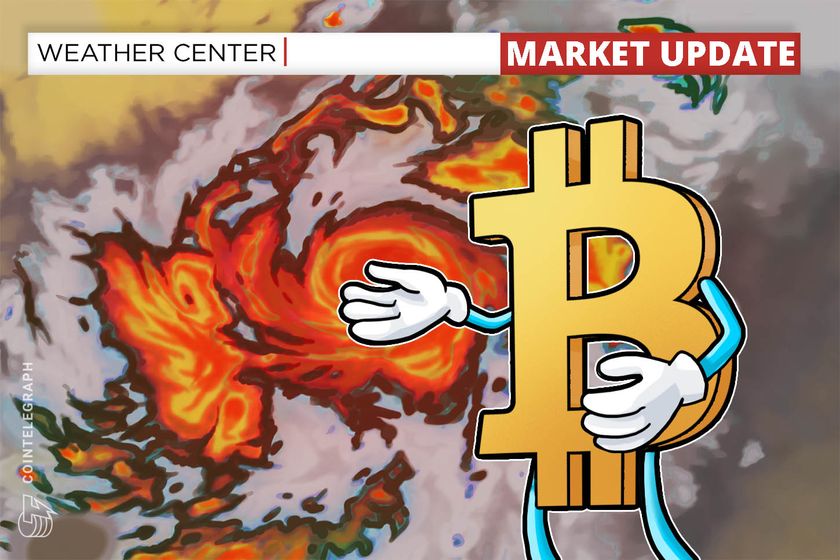Bitcoin falls under $60K as investors’ global economic slowdown concerns rise
2024.08.14 14:44

Bitcoin (BTC) price experienced a 5% gain between Aug. 13 and Aug. 14, reaching $61,791, before quickly reversing the entire move, falling to $58,914 in under two hours. This abrupt downturn occurred after the United States reported an inflation figure that slightly undercut analysts’ expectations. The initial price surge was driven by significant announcements concerning spot Bitcoin exchange-traded funds (ETFs) and MicroStrategy (MSTR) holdings, but macroeconomic conditions ultimately proved decisive on Aug. 14.
Heavy hitters adding Bitcoin ETF and MicroStrategy positions had limited impact
Goldman Sachs, a leading global financial institution, disclosed new spot Bitcoin ETF holdings totaling $418 million in its 13-F filing, reflecting positions as of June 30. The allocation spanned multiple providers, including BlackRock, Fidelity, Invesco, and Grayscale. While it remains unclear whether these investments were made by external fund managers or Goldman’s internal asset management team, this marks a significant milestone, as the firm oversees $2.81 trillion in assets under management.
Not all asset managers have embraced such investments. According to CNBC, JPMorgan, Bank of America, and Wells Fargo continue to restrict their financial advisors from recommending spot Bitcoin ETFs. Meanwhile, Morgan Stanley, one of the world’s largest wealth management firms, only approved the distribution and sale of spot Bitcoin ETFs through its 15,000 financial advisors as recently as Aug. 7. Consequently, Goldman’s allocation could potentially set a precedent that encourages its competitors to follow suit.
Additionally, 13-F filings released on Aug. 14 brought further attention to Bitcoin through significant positions in MicroStrategy (MSTR) shares. Norges Bank, the central bank of Norway, reported a holding of 1,123,930 shares, valued at $152.2 million, while the Swiss National Bank disclosed a stake of 466,000 shares, worth $63.1 million. Moreover, South Korea’s National Pension Service announced the acquisition of 245,000 shares, amounting to $33.2 million.
The pivotal factor behind Bitcoin’s subsequent decline appears to be the US Department of Labor’s report, which revealed a 2.9% increase in the Consumer Price Index (CPI) over the past 12 months, marking the lowest rise since March 2021. Notably, shelter costs contributed to 90% of the overall metric, reinforcing investor confidence that the US Federal Reserve (Fed) is likely to reduce interest rates throughout 2024.
Global recession fears drive investors away from Bitcoin
An environment of expansive monetary policy generally benefits the stock market by reducing financing costs for companies and diminishing the appeal of fixed-income investments. While Bitcoin doesn’t directly compete with the S&P 500, a significant part of its allure stems from its role as a hedge, particularly during periods of uncontrolled inflation. Consequently, recent macroeconomic trends have not been favorable for Bitcoin’s performance.
Related: 45% of Bitcoin supply has not moved in 6 months — Research
However, attributing Bitcoin’s price weakness solely to a minor surprise in the US CPI data would be simplistic. Notably, the last time Bitcoin maintained a price above $62,000 was on Aug. 2. The primary catalyst for the correction from its $70,000 peak on July 29 was the stock market downturn triggered by the Bank of Japan’s decision to raise interest rates. This move heightened risk aversion among investors, leading the US 5-year Treasury yield to close on Aug. 5 at its lowest level since May 2023.
Therefore, Bitcoin’s negative performance on Aug. 14 seems to reflect investor concerns about the likelihood of a global economic slowdown. To provide context, gold, traditionally considered a hedge, is trading less than 2% below its all-time high. This contrasts with the recent 5.7% gains in nine days on the S&P 500 index, which may be misleading, as they largely reflect short-term impacts from temporary US Fed actions.
One potential silver lining is that Bitcoin could become a valuable asset if the global economy fails to maintain its momentum, irrespective of inflation trends. For instance, during periods of recession, there is typically reduced demand for credit and lower consumer spending, which can lead to decreased inflation. Such a scenario, known as stagflation, could present a compelling case for Bitcoin’s bullish potential in 2025, though it is still too early to gauge the probability of this outcome.
This article does not contain investment advice or recommendations. Every investment and trading move involves risk, and readers should conduct their own research when making a decision.








